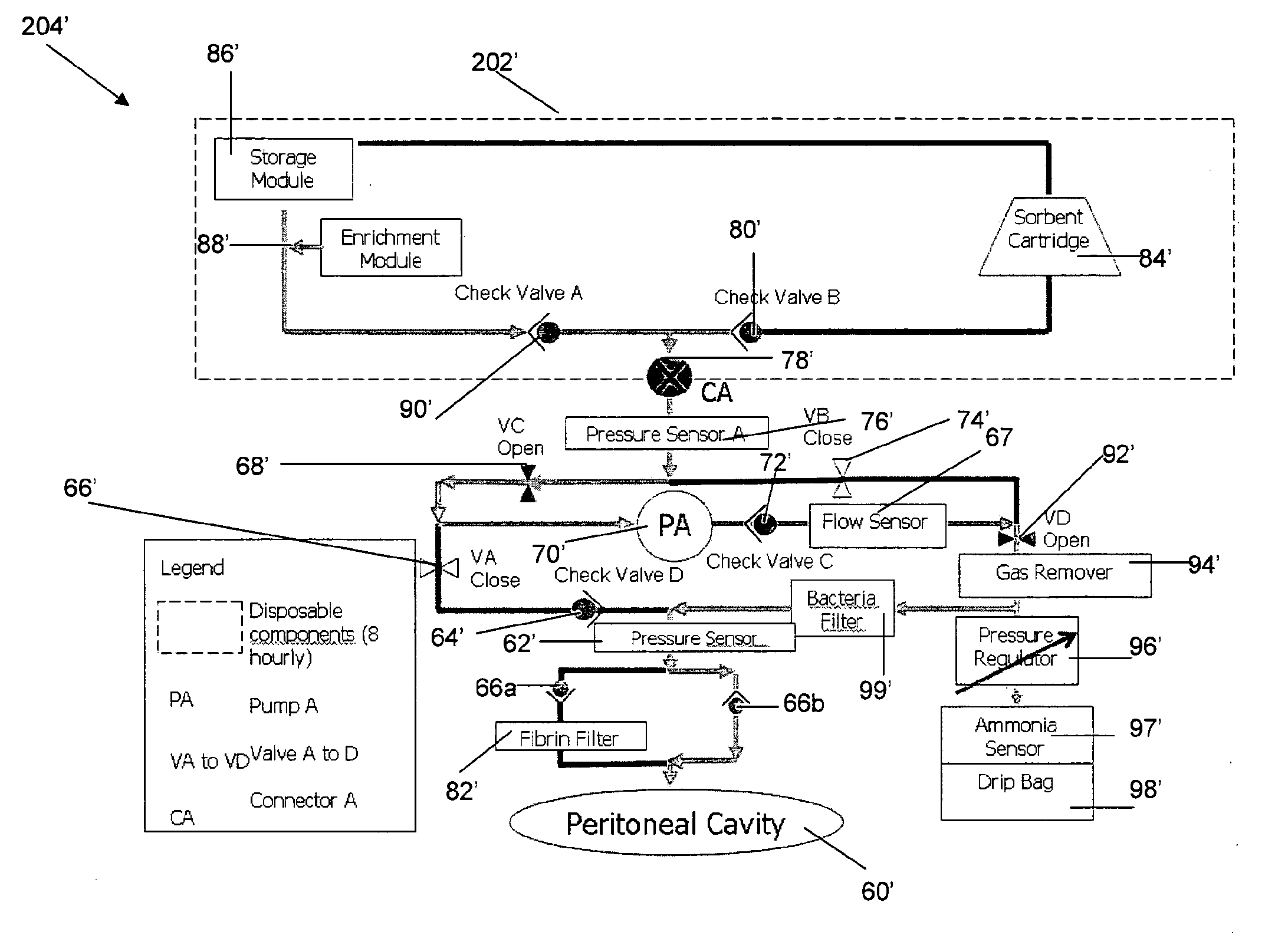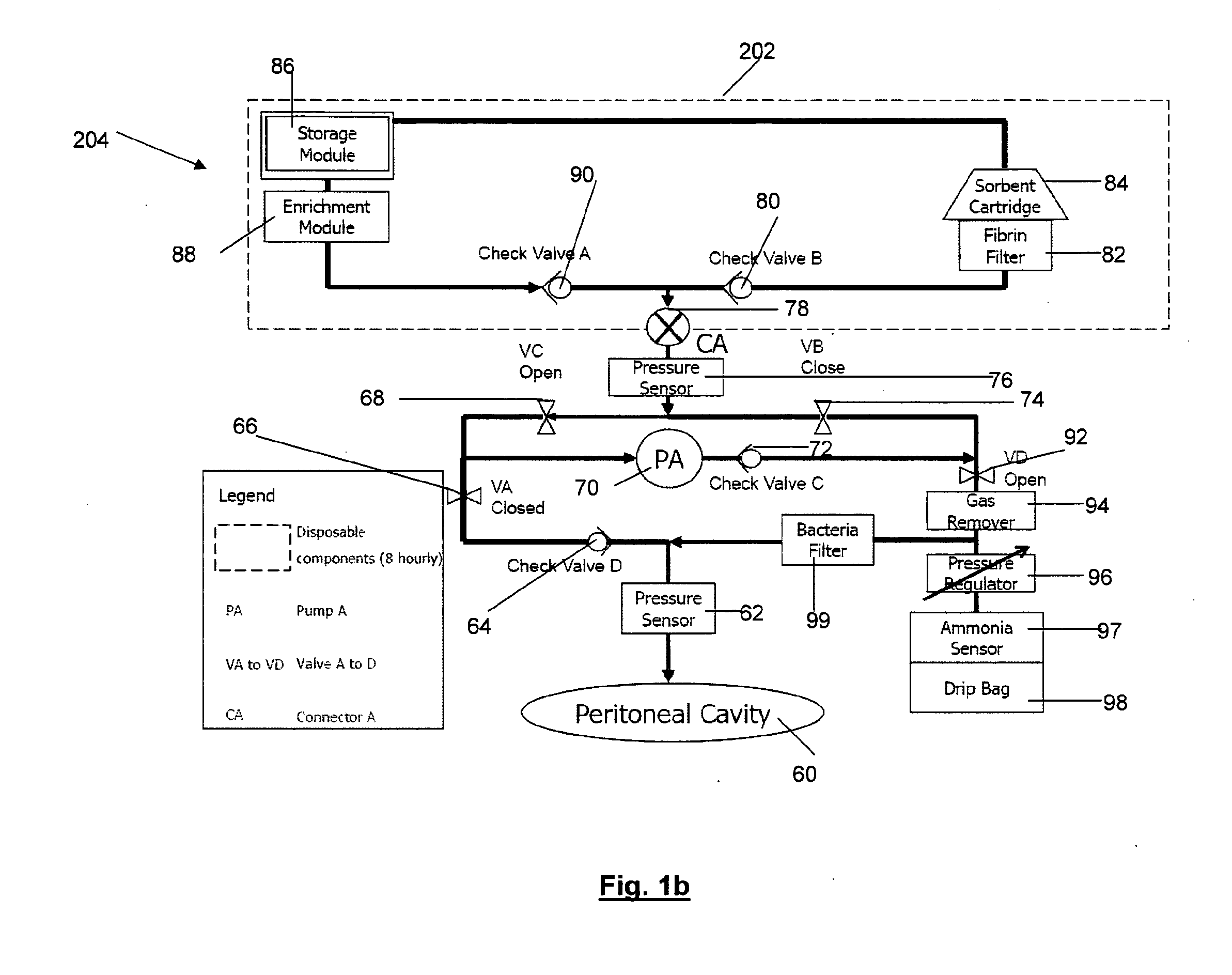Flow system of a dialysis device and a portable dialysis device
a technology of dialysis device and flow system, which is applied in the direction of ion exchanger, separation process, chemistry apparatus and processes, etc., can solve the problems of increased risk of internal hemorrhage, undesirable repercussions that are hazardous to an individual's health, and unstable electrolyte level, so as to prevent leakage, spillage and bacteria contamination, and facilitate transportation. , the effect of restricting the patient's normal range of motion
- Summary
- Abstract
- Description
- Claims
- Application Information
AI Technical Summary
Benefits of technology
Problems solved by technology
Method used
Image
Examples
Embodiment Construction
[0055]Exemplary, non-limiting embodiments of a flow system of dialysis device and portable dialysis device will now be disclosed.
[0056]The flow system of a dialysis device comprises:a dialysate conduit which is capable of being in fluid communication with the peritoneal cavity of a patient's body and of being in fluid communication with a flow path, said flow path allowing dialysate to flow from a patient's body to a sorbent capable of removing contaminants within said dialysate in an outflow mode and in an inflow mode returning said dialysate substantially free of contaminants to said patient's body;[0057]a pump for moving said dialysate along said flow path in both the outflow mode and inflow mode; and[0058]a plurality of valves disposed along said flow path and being configured to, in the outflow mode, allow said dialysate to flow from said dialysate conduit to said sorbent for removal of contaminants therein, and in the inflow mode, allow dialysate substantially free of said con...
PUM
| Property | Measurement | Unit |
|---|---|---|
| Flow rate | aaaaa | aaaaa |
| Flow rate | aaaaa | aaaaa |
| Flow rate | aaaaa | aaaaa |
Abstract
Description
Claims
Application Information
 Login to View More
Login to View More - R&D
- Intellectual Property
- Life Sciences
- Materials
- Tech Scout
- Unparalleled Data Quality
- Higher Quality Content
- 60% Fewer Hallucinations
Browse by: Latest US Patents, China's latest patents, Technical Efficacy Thesaurus, Application Domain, Technology Topic, Popular Technical Reports.
© 2025 PatSnap. All rights reserved.Legal|Privacy policy|Modern Slavery Act Transparency Statement|Sitemap|About US| Contact US: help@patsnap.com



